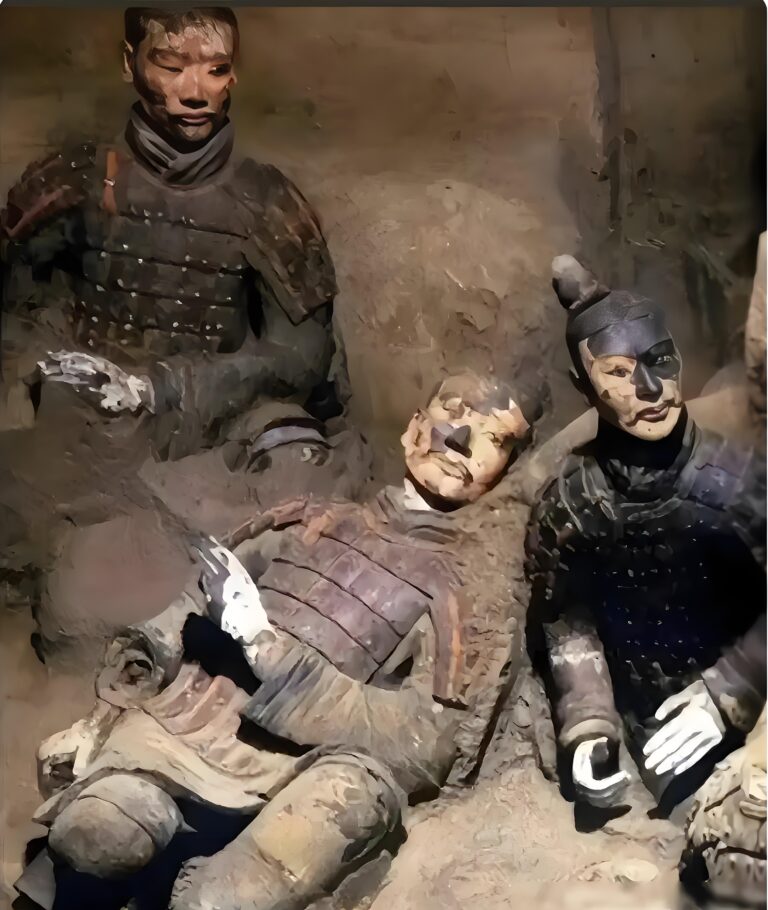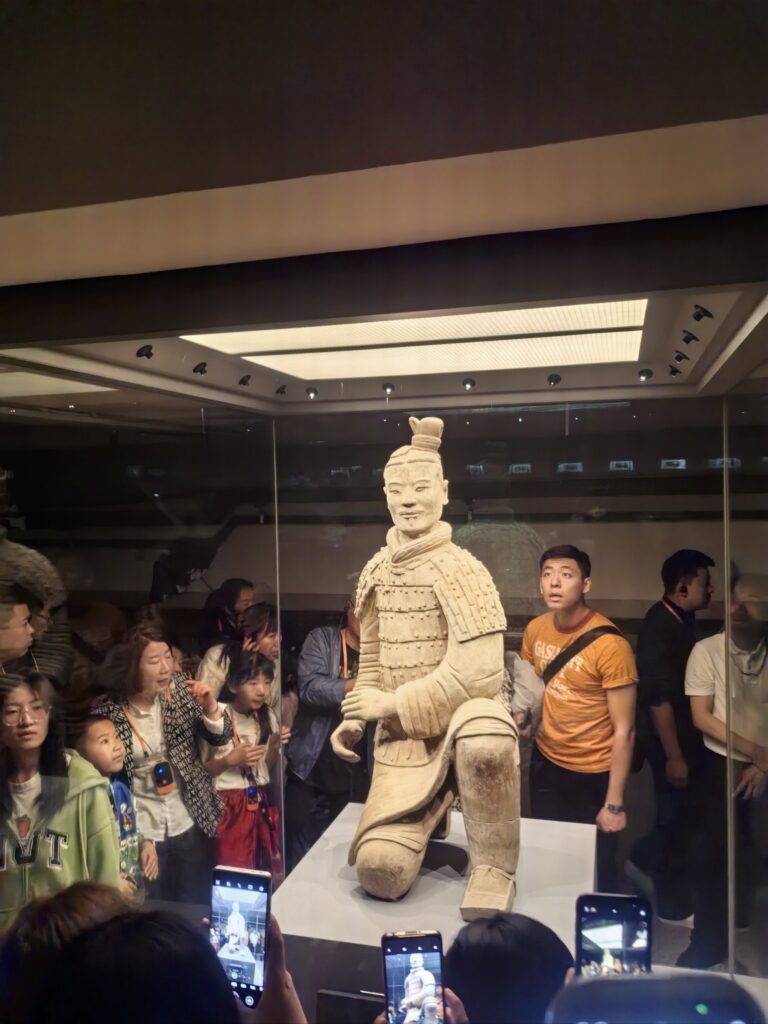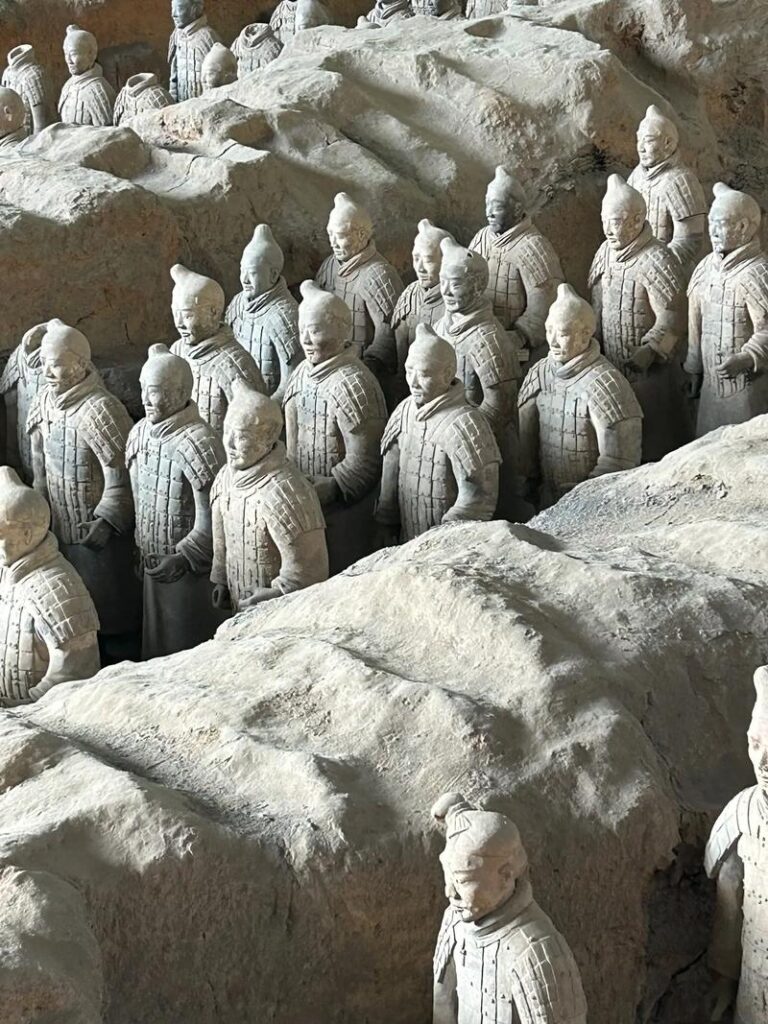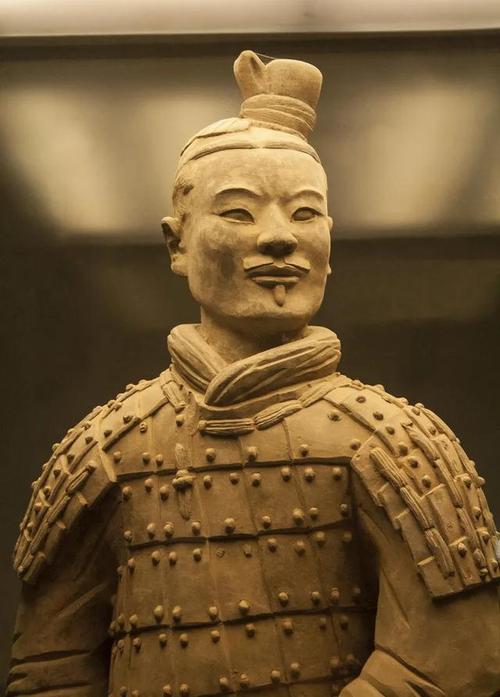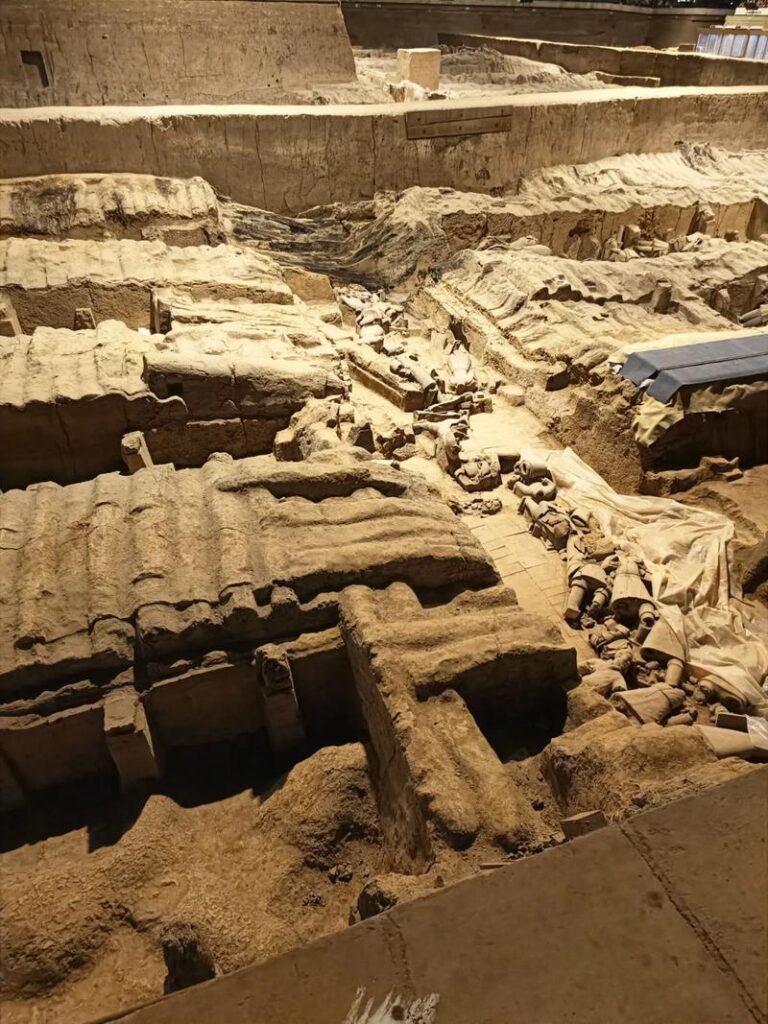The Cultural Significance and Impact of the Terracotta Warriors
Terracotta Warriors and Horses: The Oriental Code that Rewrites the Perception of Civilization
When Americans first witness the Terracotta Army in Lintong, Xi’an, they are often struck by a sense of time and space dislocation. These silent clay warriors not only carry the imperial ambitions of Emperor Qin Shi Huang, but are also a brief history of technology written in clay. In China 2,200 years ago, artisans had mastered the core technology of firing clay to over 1,000 degrees Celsius, a high-temperature-control technology hundreds of years ahead of European pottery crafts of the same period. Even more amazingly, through the unique “kiln-forming” process, they formed a dense crystalline layer on the surface of the terracotta warriors, a technique similar to modern ceramic armor, which has enabled the terracotta warriors to remain relatively intact over the millennia.
The secrets of bronze swords are equally amazing. Craftsmen in the Qin Dynasty used the “Hundred Refined Steel” technique, in which iron was repeatedly folded and forged to remove impurities and create a blade with a precise amount of carbon. Bronze swords made by this process, when unearthed, were still so cold that they could easily cut through modern paper. Recent scientific analysis has shown that the thickness of the chromium salt oxide layer on the surface of the sword is only 0.1 microns, a nanoscale anti-rust technology that was not rediscovered by modern science until the 20th century. This transcendent technological wisdom makes the Terracotta Warriors a living museum of ancient Chinese technological innovation.

When Americans first witness the Terracotta Army in Lintong, Xi’an, they are often struck by a sense of time and space dislocation. These silent clay warriors not only carry the imperial ambitions of Emperor Qin Shi Huang, but are also a brief history of technology written in clay. In China 2,200 years ago, artisans had mastered the core technology of firing clay to over 1,000 degrees Celsius, a high-temperature-control technology hundreds of years ahead of European pottery crafts of the same period. Even more amazingly, through the unique “kiln-forming” process, they formed a dense crystalline layer on the surface of the terracotta warriors, a technique similar to modern ceramic armor, which has enabled the terracotta warriors to remain relatively intact over the millennia.
The secrets of bronze swords are equally amazing. Craftsmen in the Qin Dynasty used the “Hundred Refined Steel” technique, in which iron was repeatedly folded and forged to remove impurities and create a blade with a precise amount of carbon. Bronze swords made by this process, when unearthed, were still so cold that they could easily cut through modern paper. Recent scientific analysis has shown that the thickness of the chromium salt oxide layer on the surface of the sword is only 0.1 microns, a nanoscale anti-rust technology that was not rediscovered by modern science until the 20th century. This transcendent technological wisdom makes the Terracotta Warriors a living museum of ancient Chinese technological innovation.

In the artistic dimension, Qin Dynasty craftsmen demonstrated amazing realism. The face of each terracotta warrior is a unique “identity card”: the locked brow tells of battlefield stress, the upturned corners of the mouth reveal the conviction of victory, and even the open and close nostrils of the horses are full of vitality. This precise capture of individual characteristics, more than a thousand years earlier than the European Renaissance portrait sculpture. Even more amazingly, through 3D scanning technology, archaeologists have found that the facial proportions of the terracotta warriors are perfectly in line with modern aesthetic standards, and this aesthetic consensus across time and space proves that there is some kind of universal law in human perception of beauty.
The revolution of religious concepts is another gift that the Terracotta Warriors have left to the world. Under the system of human martyrdom that prevailed during the Shang and Zhou Dynasties, dozens or even hundreds of living people were often buried with them in the tombs of aristocrats. The fact that Qin Shi Huang used terra cotta legions instead of real people to be buried is not only a respect for life, but also a major turning point in the course of civilization. Behind this change was the practice of the Legalist concept of “putting people first” and the improvement of social morality under a centralized system. While the Western world was still struggling in the darkness of the Middle Ages, China had already demonstrated its profound reflection on the value of human nature through the Terracotta Warriors.might march forth at any moment. More than art or archaeology, the Terracotta Army symbolizes humanity’s unending journey: from violence to compassion, chaos to order, and the eternal quest to honor life through creation—not destruction.

The real value of the Terracotta Warriors lies in the fact that they completely rewrote the world’s perception of ancient Chinese civilization, and the discovery of the Terracotta Warriors in 1974 was a hammer blow that shattered the prejudice of the “Eastern Stagnation Theory”. While Western scholars were still questioning the existence of systematic writing in ancient China, the bronze sword inscriptions, ceramic measuring scales and chariot gears unearthed in the Terracotta Warriors pit silently demonstrated a sophisticated standardized production system. 1987, when UNESCO inscribed the Terracotta Warriors pit into the first World Cultural Heritage, it said, “This is one of the most stunning archaeological discoveries in the history of mankind, and proves that the ancient civilization of China has reached heights that would amaze the modern world. marvelous heights.”
Today, when visitors stand in front of Pit 1 and witness this neatly arranged underground legion, they see not only Qin Shi Huang’s lust for power, but also the code of Chinese civilization’s endless existence. From the formula of clay to the smelting of bronze, from facial carvings to military formations, every detail of the Terracotta Warriors shines with the light of wisdom. This ability to perfectly integrate individual creativity with collective wisdom is the core driving force behind the continuous development of Chinese civilization over the past 5,000 years. As archaeologists say, “The Terracotta Warriors are not the end of history, but a time-space tunnel connecting the past and the future.” In this tunnel, modern man is constantly discovering new coordinates of civilization and redefining the boundaries of human creativity.


